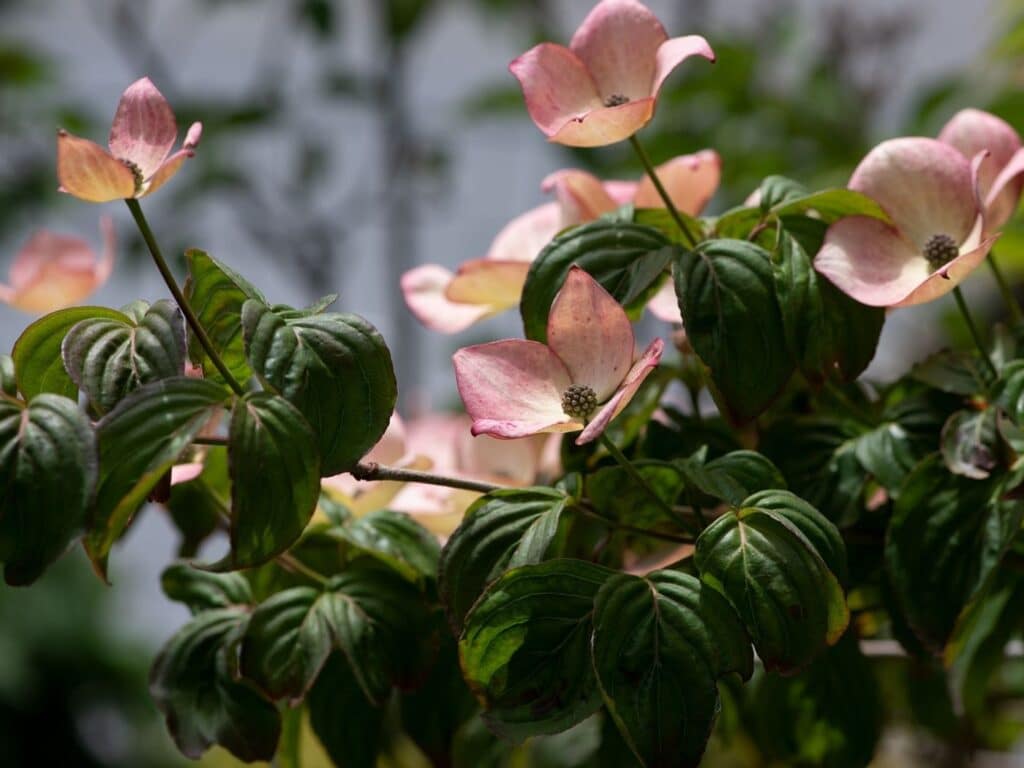Imagine you’re gazing at your beloved dogwood tree, only to notice its leaves wilting, its blooms fading, and its vigor dwindling. You’ve given it plenty of water, so what could be wrong?
Often, the issue isn’t a lack of care, but rather, an excess. Overwatering is a common pitfall for many garden enthusiasts, and dogwood trees are no exception.
In this article, we’ll explore the signs of an overwatered dogwood tree, the damage it can cause, and most importantly, how to restore your tree back to health. With the right knowledge, you can ensure that your dogwood tree thrives, adding beauty and value to your landscape.
Identifying Symptoms of an Overwatered Dogwood Tree
Overwatering is indeed harmful to your dogwood trees. It’s vital to recognize the symptoms early to take appropriate action. Let’s break down the common signs your dogwood tree may be getting too much water.
Yellowing Leaves
One of the first signs you’ll notice if your dogwood tree is overwatered is yellowing leaves. While it’s common for leaves to turn yellow in autumn or due to age, unnatural and untimely yellowing, especially with curled leaf edges, could indicate excessive water. The tree tries to save water back by shutting off nutrients to leaf extremities, causing them to turn yellow.
Root Rot Symptoms
Root rot is another typical sign of overwatering. If your dogwood tree’s roots are constantly soaking, they can’t take in oxygen, leading to root rot. You may see dark, soggy roots or even a foul smell emanating from the soil.
It’s harder to identify without checking the roots below the soil, but a waterlogged, musty soil surface could be a telltale sign.
Stunted Growth and Leaf Drop
Lastly, you’ll notice stunted growth in an overwatered dogwood tree. You may also experience early leaf drop, even though it’s not the leaf-falling season. These symptoms occur as the tree struggles to maintain appropriate growth with its water-soaked, suffocating roots. A balance of water and oxygen is crucial for healthy root function and, subsequently, stable growth.
By recognizing these symptoms, you can prevent damage from overwatering and ensure the health and longevity of your dogwood tree.
Causes of Overwatering in Dogwood Trees

While it’s crucial to water your dogwood trees adequately, certain factors can lead to overwatering. The following subheadings delve into these common causes:
Excessive Watering Practices
It’s tempting to give your dogwood trees a good soak, especially during hot, dry seasons. But remember, giving them too much water is just as harmful as giving them too little.
Continual watering can saturate the soil, drowning and damaging the delicate roots. Important indicators of overwatering include wilted, yellowing leaves or stunted growth. So, next time you reach for the hose, consider if your dogwood really needs it.
Poor Soil Drainage
What kind of soil are your dogwood trees planted in? If it’s heavy clay or compacted soil, your trees could be at risk of overwatering.
These types of soil reduce the ability for water to drain away quickly, often causing water to pool at the base of the tree. Regularly check the soil moisture levels around your trees to ensure they’re not sitting in soggy conditions.
Incorrect Mulching Techniques
Mulching helps conserve moisture by slowing the evaporation process. But if you’re not doing it right, it could contribute to overwatering. Too much mulch or placing it against the trunk creates a moist, dark environment where fungi can flourish.
It also traps too much water near the roots, leading to root rot. As a rule of thumb, keep mulch about 3 inches deep and not piled against the trunk. Your dogwood trees will thank you.
Steps to Revive an Overwatered Dogwood Tree
Let’s dive right into the practical steps you can take to rejuvenate an overwatered Dogwood tree and restore its health.
Adjusting Watering Schedules
Your first step should be to revise your watering routine. Overwatering is often due to a misunderstanding of the tree’s actual needs. Remember, Dogwood trees prefer moisture but not waterlogging.
Hence, instead of watering every day, try shifting to watering deeply but infrequently, say once a week. The purpose here is to slowly re-establish balance, allowing the roots access to oxygen and drying out excess water.
Improving Soil Drainage
Good drainage plays a pivotal role in preventing overwatering. If your dogwood tree’s soil is waterlogged, you may need to enhance its drainage. Start by adding organic matter such as compost or well-rotted manure to the soil around your tree.
You can also consider building a raised bed or creating a slope to facilitate better runoff. More fertile and loose soil will effectively enhance absorption and prevent water from stagnating.
Treating Root Rot
If overwatering has led to root rot in your Dogwood tree, it’s time to take action. At the first signs of root rot, such as browning, softening, or wilting roots, remove the affected parts swiftly to prevent spread. Use a clean and sharp set of gardening shears.
After the process, refrain from watering for a few days to give the roots time to recover. Applying a fungicide, approved for root rot, can also be beneficial in controlling the scenario.
By adhering to these steps, together, we can guide your overwatered Dogwood tree back to its former glory. Implementing these changes may well seem challenging at first, but with consistent care and attention, the health of your tree can dramatically improve.
Preventative Measures for Dogwood Tree Health
Caring for your dogwood tree goes beyond simply reviving it from the grip of overwatering. Let’s dig deeper into the practical preventative measures to maintain a healthy dogwood tree.
Proper Watering Techniques
Watering right is crucial to your dogwood tree’s health. You may not know it, but there’s more to watering than just spraying it down. Here are key points to keep in mind:
- Avoid Overwatering. Keep your watering routine consistent but moderate. Overwatering is a common mistake, but it can lead to root rot, leaf wilt, and poor growth.
- Consider the Weather. If it’s been raining a lot, the tree may not need additional water. Always adjust your watering based on the weather and season.
- Use a Soaker Hose. For a deep, slow watering that’ll reach the roots without drenching the foliage, try a soaker hose.
Choosing the Right Soil
The right soil can provide the best environment for your dogwood tree to thrive. What type of soil should you consider, then?
- Well-Draining Soil. Did you know that soggy soil could drown your tree’s roots? Opt for well-draining soil that doesn’t hold too much water.
- Rich and Organic. Dogwoods appreciate fertile, organic soils. Mulching with organic compost can enrich your soil and promote healthy growth.
- Acidic pH. Dogwood trees prefer a slightly acidic soil pH. Regular soil testing can ensure the pH stays within the optimal range.
Regular Monitoring and Maintenance
Like any living thing, your dogwood tree needs regular checks and tune-ups. How can you maintain optimal health for your dogwood tree?
- Look Out for Pests. Regularly check your tree for signs of pests or disease. Early detection can prevent more serious problems down the line.
- Pruning. Remove dead or dying branches to promote new growth and reduce the risk of disease.
- Nutrient Supplements. If the tree seems weak or stunted, it may lack certain nutrients. Consider supplementing with slow-release fertilizers based on a soil test recommendation.
Taking these preventative measures can help maintain your dogwood tree’s health and keep it looking its best, season after season.
See more:







